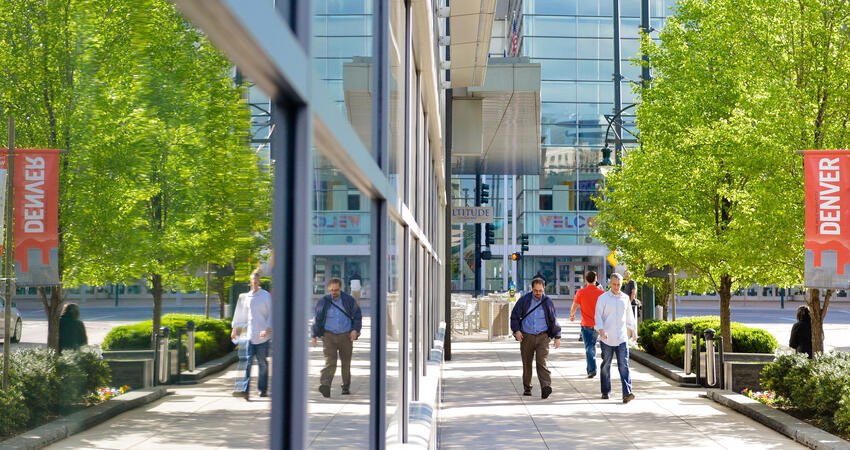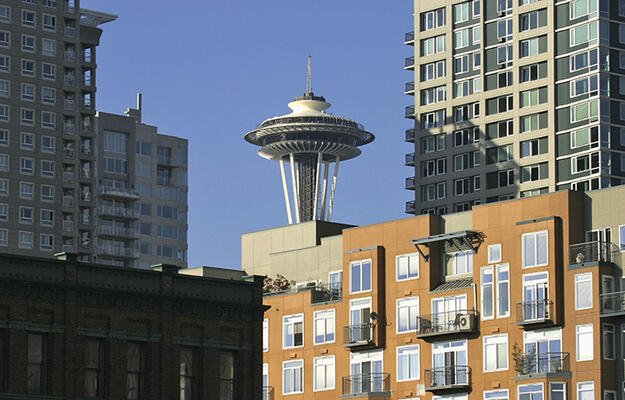
Colorado's Healthy Housing in Unlikely Places
Using a former convent, airport, and more traditional residential parcels, developers in Colorado are creating healthier places to live. According to Pat Coyle, director of the Colorado Division of Housing, although Colorado has the fourth youngest population of any state in the country, “come 2020, our aging population will be one of the highest in the country.” Attendees at the ULI Terwilliger Center for Housing's 2014 Housing Opportunity conference learned about a few of Denver area developments that prioritize health and health and wellness for Colorado residents of all ages.
Stapleton
The Forest City Stapleton development at Denver’s former airport supports “healthy active living, connectedness, and social engagement,” according to Heidi Majerik, the project’s Director of Development. It includes parks for 15,000 residents, as well as sidewalks and multi-use trails that connect to the city’s trail network. “Everyone lives within a quarter-mile of a park or open space and because the development is mixed-use, residents are close to services,” said Majerik. Design features aimed at social engagement include front porches. “We wanted to build a community that was equitable, and socially and environmentally and economically sustainable,” Majerik said.
Aria Denver
Aria Denver is a new community under development on the site of a former convent. Of the 450 homes planned for the Aria development, 72 affordable rental apartments and 13 affordable townhouses will be constructed in the first phase of development. Later, the development will also include senior housing and intergenerational cohousing, as well as pocket parks, a farm, community gardens, and a “pay-what-you-can” farmer’s market. Additional services will include an on-site medical clinic and a healthy-living coordinator.
Aria will also be reaching out to 15,000 low-income individuals identified through census tracts whom they hope to include in healthy living initiatives. “We know the way we design our homes and streets really does have an impact on health. So we have a responsibility and it doesn’t fall on other people shoulders, it falls on our shoulders to look at what’s being built in our industry and say we have to change the paradigm,” said Susan Powers, Vice President at Urban Ventures, the co-developer of the Aria Denver project.
Senior Apartments
Carl Koelbel, development director for Koelbel and Company, discussed two developments in Denver on transit corridors. Yale Station opened in July 2011 and has 50 units of affordable housing for people ages 55 and older. The development is sited on 1.5 acres adjacent to the Yale light rail station, with ground-floor commercial space that currently includes an on-site dentist. “Especially for seniors who don’t want to drive or can’t drive, it allows them to be active,” said Koelbel of the mixed-use, transit-oriented community. Roughly, 75 percent of the residents use the light rail or local bus weekly and 100 percent ride public transit at least once a month, with only 40 percent using a car.
The company has also completed work on University Station, another transit corridor development comprised of 60 age-55-plus and income-restricted housing units on a former storm water detention site across from the University of Denver. Active living opportunities include continuing education, fitness, cultural, and sports events at the university.
Mariposa
Mariposa is a mixed-income and mixed-use redevelopment of Denver Housing Authority’s former South Lincoln Homes public housing project, which is located on the 17 acres next to the 10th & Osage light rail station. The development includes 100 affordable units for seniors; 87 mixed-income, multifamily units; and six townhouses of 800 homes planned. Renee Martinez-Stone, a principal at Perspective3, a planning consultant on the Mariposa project, said healthy living amenities include bike amenities—such as bike lanes, bike-share access and in-house bike service and storage—as well as on-site social services, classrooms, community gardens and a healthy-foods café that provides youth job training.
Overall, residents say the number one amenity is the light rail connection to jobs and education. Safety is another critical feature of Mariposa. One mother in the community has said, “I feel a weight lifted off my shoulders because my child is in a safe environment.”
“The feedback of residents speaks to the value of the housing and the residents’ ability to thrive,” said Coyle.
The Business Benefits of Planning for Health
When asked about the business case for developing healthy housing, Majerik said that emphasizing health and well-being has been a draw for residents. Even during the recession, Forest City Stapleton— which Majerik says is Colorado’s best-selling master-planned community—continued to hold its value. Koelbel added that the senior properties lease up within a month or two if they’re near transit, which is especially important for seniors.
“We still continue to rent properties and that tells us there is value in the market,” said Martinez-Stone.
Coyle said that he sees an additional aspect of the business model in the potential to reduce health costs. “The healthier people are, the lower the cost to the taxpayers,” he said.


